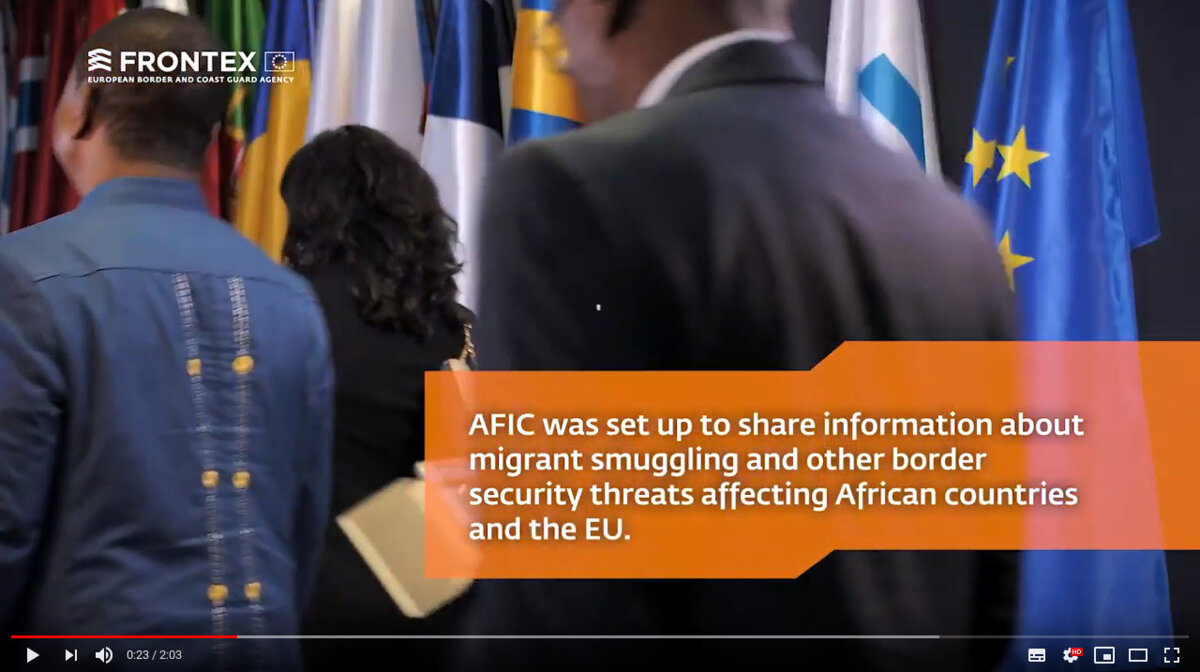
Agrandissement : Illustration 1

While climate change seems to be intangible, nowhere and everywhere at the same time, it is entangled with everything and everyone. Against this backdrop, the Berliner Gazette’s 20th anniversary initiative MORE WORLD stimulates a critical dialogue. The goal is to better understand and grasp the causes of climate change through entanglements of ecosystems with communal, state and global structures – and ultimately to explore possibilities to tackle climate change from within such interconnections. In the following interview, the Bangkok-based researcher Sara Vigil reflects on climate change-induced migration and green grabbing in Africa and Asia.
Krystian Woznicki: You have researched climate change-induced migration from within the Sahel region in Africa. What are the current causes related to climate change, and how do they differ from previous forms of flight, migration, and displacement triggered by, say, rather conventional environmental disaster?
Sara Vigil: The main difference between environmental hazards at other moments in history and those that are occurring today under the impacts of climate change is that today we know that environmental and climate hazards are clearly attributable to certain human activities. This adds very important dimensions of justice and responsibility into the equation, while challenging the very notion of ‘environmental’ or ‘natural’ disasters. Disasters are not ‘natural’ for two main reasons: anthropogenic (or human-made) climate change has made environmental hazards more acute and intense than they have ever been before, and those hazards are combined with socio-politically constructed inequalities and vulnerabilities, which are the ones that turn hazards into disasters. In other words, both the storms and droughts and the inequalities and vulnerabilities that people experience are socially and politically created and constructed.
KW: How are the different environmental forces entangled with each other? Are these entanglements multiplying disastrous effects and impeding an overly easy reading of what causes specific forms of flight, migration and displacement? If so, how? And why does it still make sense to speak of climate change-induced migration?
SV: Environmental factors cannot be isolated from all the other social, political, economic, and demographic factors that together shape migration. Today, more than ever, all of these diverse migration drivers are interlinked, making it particularly difficult to speak of so-called ‘climate migrants.’ For example, even within local populations that are affected by the same environmental threats, the vulnerability and likelihood to migrate is shaped by the specific socio-economic status: those with more resources are able to adapt locally and/or through migration; there are other social characteristics such as gender and age; in addition, the cultural context and power configurations shape the likelihood to migrate.
As a result, existing migration dynamics are modified or exacerbated by environmental or climate changes, rather than uniquely caused by them. Despite the intrinsic complexity and overlapping nature of migration drivers, this does not necessarily mean that the term ‘climate-induced migration’ has no value and we should cease using it – after all, it has indeed served to highlight the preponderant role of environmental factors in the context of climate change. However, we must be extremely careful in our usage of the term since it can be deployed to depoliticize forced migration and place the blame for displacement on so-called ‘natural’ events, rather than on the political and economic choices that are at the root of environmental destruction and expulsion. Moreover, the securitization of climate change and migration can serve as an additional justification for an entrenchment of closed borders.
KW: How is the Sahel region adapting to climate changed-induced migration – and to climate change in general? To begin with, most people are internally displaced rather than moving to the affluent North, right?
SV: Indeed, as with any other type of movement, most people who migrate do so internally or regionally. This is essentially because people lack the necessary social and financial assets needed to move longer distances. Political, legal, and economic barriers to migration have made long distance, cross-border, and international migration extremely difficult, especially for those who are most vulnerable from the outset. Even if most attention remains focused on those who move, it is of utmost importance to stress that those most vulnerable are often not in a position to migrate, even where migration would be of vital importance. In these cases, it is immobility rather than mobility that constitutes a vital risk for millions of those most vulnerable to the combined pressures of economic, environmental, and political stress.
With regards to adaptation strategies, migration itself has long been one of the most essential adaptation strategies used by populations at times of environmental stress. Short distance and seasonal rural to urban migration are some of the key mechanisms through which households diversify their incomes or respond to opportunities. However, not only is long distance migration increasingly difficult, but many urban areas in developing countries are unable to absorb the extra labor force that enters the labor market every year when it is expelled from rural areas. The most vulnerable often become unprotected, exploited and casual laborers who enter into complex patterns of continued pauperization within the slums of mega-cities. Measures to adapt to climate change and migration are extremely varied; they range from bilateral labour agreements between countries of origin and destination to urban planning to the creation of dignified employment opportunities, and to the fight against environmental and climate change.
KW: The Sahel region is of particular interest to EU politics, as it is considered a major source of migration flows that are seemingly difficult to manage. The EU’s border agency has built the so-called Africa-Frontex-Intelligence Community (AFIC) with a special focus on that region, aligning itself with widely ill-reputed governments and their secret services, that is, with precisely the kind of regional actors that – at a political level – massively contribute to the unlivable conditions there. What from your point of view is an appropriate EU policy to deal with climate change-induced migration in the Sahel?
SV: The Sahel region is often portrayed as ‘ground zero’ for climate change given its high geographic exposure to climate variability, chronic poverty, demographic growth and political instability. However, and as previously stated, the bulk of African migration, all drivers combined, occurs within countries and to neighboring countries. Despite narratives of a south-north exodus of so-called ‘climate migrants’ from the Sahel to Europe, the percentage of those that embark on journeys to Europe as a result of environmental impacts remains negligible. However, it is important to highlight that migration is a structural component of social transformation processes and it is not something that can, or will, be stopped. So long as inequalities, conflicts, and environmental devastation persist, people will embark on migration as an essential means to survive and thrive.
A humane and appropriate EU policy to deal with forced migration in the context of climate change means, on a fundamental level, tackling the very conditions which make inequality, conflict and destruction possible. At a more immediate level, the provision of safe and regular migration routes for those people who are fleeing for their very survival is the only humane and dignified way forward. Letting people drown at the borders of one of the most prosperous continents in the world constitutes one of the most shameful and darkest chapters in human history.
KW: You discuss in your recent work “green grabs” as “appropriations of natural resources for environmental ends” and point to the devastating consequences of many of these market-driven initiatives as they further contribute to displacement and deprivation (of homes, jobs, rights, etc.) – in short: as they cause the opposite of what they were ostensibly invented for. Could you perhaps give an example from Africa?
SV: This definition of green grabs as ‘appropriations of natural resources for environmental ends’ was provided by Fairhead and colleagues in 2012,, and the topic has indeed become a central part of my work. In fact, it is not only the biophysical impacts of climate change that are contributing to changing migration dynamics, but paradoxically also the policies that have been put in place in the name of combating environmental and climate change. For example, when biofuel production or forest carbon projects compete with the land needs of those most vulnerable, people are often expelled from their lands and their livelihoods – leading to ‘green grabbing-induced migration’.
Africa has been one of the greatest targets of the global rush for land, whether it be for food production, for biofuel production, or for conservation efforts. The examples are far too numerous to recount here, but one of the cases of land grabs I examined in Senegal consisted of declassifying a natural reserve for biofuel production for Europe – which then never materialized. In the process, the livelihoods of 9,000 semi-nomadic pastoralists were placed at risk, with significant social and environmental impacts. In many other contexts tropical forests are often under the control of governments that can decide to grant the land for either agricultural or conservation efforts, often in disregard of the needs of the local populations who rely on them. When access to vital livelihoods is impeded, many are left with few other options than to enter forced migration streams.
KW: What is the lesson for the EU and other major polluters from your findings on green grabbing?
SV: Environmental policies that do not focus on reducing social inequalities and redistributing their benefits among the most vulnerable will not only do little to curb emissions, but will also lead to what I have termed the third injustice of climate change, whereby the most vulnerable are not only the least responsible for and the most affected by environmental change, but also the front-line victims of environmental and climate policies. Although mitigation and adaptation measures are absolutely essential, when these compete with the needs and access to resources for those most vulnerable, these very measures can also create the conditions for destruction and displacement. The greatest lesson to be drawn from this is that environmental justice and social justice are two sides of the same coin: one will be impossible without the other.
KW: Taking the history of Europe’s colonial expansion in Africa and Asia into account, what is the historical dimension of green grabbing?
SV: The interrelations between environmental change, land grabs, and migration that we see today are a product of fundamental historical changes that can be situated, to a very large extent, in colonialism. As I explore in my dissertation, it is in fact what Alejandro Portes called ‘colonizing migrations’ that are at the root of many of the environmental and social crises that we are experiencing today. These colonial migrations to places where land and labor were cheap (or free) are very similar to the movements we see today of economic and political elites involved in land grabs. Environmental justifications have long been deployed to delimit the access to natural resources for some at the expense of access to others in the process of commodifying and appropriating land and labor. The phenomenon of green grabs thus has colonial roots, but it has taken on new dimensions today with climate change mitigation and adaptation discourses and projects.
KW: You are currently based in Bangkok. Does this new point of view have an impact on how you see the relationship between Europe and the Global South with regards to climate change-induced migration?
SV: The relationship between Europe and the Global South with regards to migration is indeed very different in Africa than in Asia. This is of course essentially due to the geographical distance that separates the two continents, making the notion of mass migration from Asia to Europe unlikely. However, the relationship of Europe towards the Global South with respect to the very conditions which create environmental destruction and forced migration linkages is not all that different. In fact, the impacts of greenhouse gas emissions of industrialized countries are transboundary and hence impact the whole world, independently of proximate geographical distance.
Moreover, extraterritorial human rights violations and the environmental impacts of commodities produced in Asia for European consumption also contribute to land grabs and environmental destruction. A dimension that I’m now considering strongly in my research is how pervasive gender inequalities – which are part of the power configurations which shape the likelihood and possibility to migrate – shape, and are reshaped by, climate change, land grabs, and migration. With environmentalism and feminism having become the strongest social movements for hope of our times, bridging environmental and feminist agendas at both the research and policy levels has become a key component in achieving truly transformative knowledge.
KW: With regard to Europe’s ethical responsibility, Sujatha Byravan and Sudhir Chella Rajan state that “even if the future annual rate of emissions from Europe and North America were to be zero, their obligations will be non-zero because of the delayed effect of their historic emissions. Furthermore, the fact that disproportionate accumulation is also associated with early emitters – that is, the industrialized countries – provides additional reasons for assigning them special responsibilities for mitigation.” What is your stance on this issue? Can this compelling argument provide a basis for future EU policies in the context of climate change-induced migration and displacement? If so, how?
SV: Although these issues fall outside the scope of my area of research, they have strong parallels with discussions over reparations to former colonies. The question of common but differentiated responsibilities is key in the climate negotiations, and it acknowledges the capabilities and responsibilities of different countries in addressing climate change. Historical responsibility has long been a thorny issue as it is difficult to ascribe responsibility to present generations for the emissions (and actions) of past generations. Moreover, and importantly, even within industrialized countries not all people are equally responsible for climate change.
Different socio-economic groups, and people with different social identities, contribute very differently to climate change even when they live within the borders of the same nation-state. This means that treating countries as blocks, and their citizens as homogeneous groups, can also lead to injustices and possibly inaction. An additional layer of complexity results from the fact that many developing countries are now catching up with the level of emissions of developed nations. In a context where the most basic human rights are not being respected, adding a layer of historical responsibility for emissions to EU migration policies, while important, unfortunately seems to me quite a stretch in practice.
KW: Where do you see openings that already exist for cross-border cooperation at the global level? Where and how should new forms of cooperation emerge so as to enable Europe or the EU to live up to its ethical responsibility vis-à-vis climate change-induced migration?
SV: Policy initiatives with regards to climate migration have proliferated in recent years. The Paris Agreement, where the impacts of displacement are fully acknowledged, of course constitutes a basic pillar in this respect. Other global agreements such as the Global Compact on Migration and the Platform on Disaster Displacement are also key. However, and though many international, regional, and national initiatives now exist to deal with so-called ‘climate migrants’, these will only be successful if they contribute to addressing the socio-economic and political vulnerabilities which turn hazards into disasters. In other words, there is a real urgency to address the structural causes, and not the symptoms, of both environmental destruction and forced migration. As my research shows, without paying explicit attention to the power structures that underline environmental destruction and forced migration, the interventions enacted to solve them can reinforce destruction and further delay real transformative action.
Join the MORE WORLD project!
The BG’s 20th anniversary project MORE WORLD invites you to explore together cooperative practices that tackle climate change. To this end, the BG will organize a big conference at the end of the year, offering a diverse program of workshops bringing together people from more than 25 countries. The call for registration invites you to join the workshops. Further information can be found on this website: more-world.berlinergazette.de
About Sara Vigil
Sara Vigil is a Research Fellow at the Stockholm Environment Institute (Asia centre) within the Gender, Environment, and Development research cluster. Sara has over eight years of professional experience in academia and policy on climate change politics, migration, land grabbing, and gender. This includes work as a research fellow and associate for several universities, think tanks, and international organizations. Sara has lectured on international cooperation, migration governance, and environmental politics at Sciences Po Paris, Paris 13-Sorbonne University, and at the Brussels School of Journalism and Communication. She holds a bachelor’s degree in Political Science and International Relations from UNED (Madrid, Spain), a master’s degree in Sociology from the University Paris Descartes Sorbonne (Paris, France), and is currently finalizing a joint PhD in Development Studies and Political and Social Sciences at the International Institute of Social Studies of Erasmus University Rotterdam (The Netherlands) and at the University of Liège (Belgium). At the International Institute of Social Studies, Sara was a member of the MOSAIC project “Climate change mitigation policies, land grabbing and conflict in fragile states” in Myanmar and Cambodia. At the University of Liege, she was a management committee member of the Environmental Diplomacy and Geopolitics EU H2020 project and was a research partner at the “Migration, Environment, and Climate Change: Evidence for Policy” project led by the International Organization for Migration. Sara has also been a visiting researcher at the University of California, Berkeley, at the Department of Environmental Science, Policy, and Management. Sara has consulted on environment and migration issues for the World Bank, the Nansen Initiative, and the Food and Agriculture Organization of the United Nations, and closely follows the UNFCCC climate negotiations as a member of the Advisory Group on Climate Change and Human Mobility. Sara is also an Associate Research Fellow at the Italian Institute for International Political Studies and at the Center of Philosophy, Politics and Epistemology of the University Paris V-Sorbonne. Sara is fluent in English, Spanish and French



